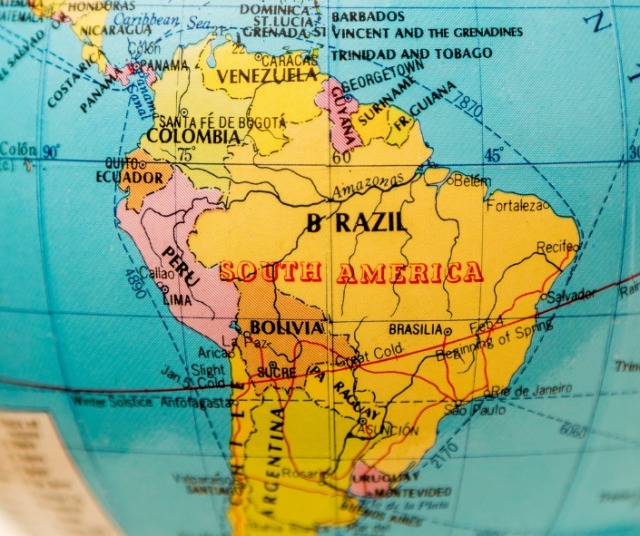The Spanish colonization of America is a crucial chapter in world history that has left a lasting and controversial legacy. For more than three centuries, the Spanish empire expanded across much of America, from present-day Mexico to Argentina, leaving a deep mark on the culture, politics, economy and society of the region.
The Voyages of Columbus and the Discovery of America
The background that led to the voyages of Christopher Columbus and the discovery of America is intertwined with a complex web of historical, geographical and cultural factors that shaped this crucial moment in world history. The European historical context in the 15th century was marked by the expansion of knowledge, curiosity about the world, and competition between nations for trade routes and resources.
One of the key factors was the Renaissance , a period of cultural and scientific flourishing that stimulated exploration and the search for new horizons. The invention of the printing press by Johannes Gutenberg in 1440 allowed for a broader dissemination of knowledge, including the ideas of ancient Greece and Rome, which fostered intellectual curiosity and the desire to explore the unknown. Furthermore, the fall of Constantinople in 1453 to the Ottomans cut off an important trade route and increased the need to find alternative routes to Asia, a source of spices and other valuable products. Portugal, for example, was leading the exploration of the African coasts in search of a sea route to Asia, creating strong competition between European powers.
In this context, Christopher Columbus, a Genoese navigator in the service of the Catholic Monarchs of Spain, proposed a bold plan: reach Asia by sailing west, across the Atlantic Ocean. His vision was based on an erroneous estimate of the Earth's circumference, but he found the support of the Catholic Monarchs, Isabella and Ferdinand, who saw in his plan an opportunity to expand the power and wealth of Spain.
On October 12, 1492, Columbus arrived in the Bahamas, marking a milestone in history known as the "Discovery of America." Although Columbus did not fully understand the magnitude of his achievement, his voyage inaugurated an era of European exploration in the Americas that would change the course of history.
Reasons for Spanish Colonization
Spanish colonization of the Americas was driven by a number of interconnected reasons. One of the main motives was the desire to obtain wealth, especially gold and silver. The Spanish believed that America was full of treasure, and the search for precious metals was a key driving force behind colonization. In addition to wealth, the spread of Christianity played an important role. Spanish missionaries came to America with the intention of converting indigenous populations to Christianity, which is known as evangelization. The Catholic Church played a crucial role in colonization by establishing missions and evangelizing native populations.
Another important reason was the desire to expand Spain's power and influence in Europe. Competition for control of territories and resources was fierce among the European powers of the time, and Spain sought its share in the distribution of the colonies.
The Conquest Process
The process of Spanish conquest was often brutal and bloody. The conquistadors used technological and military superiority, such as gunpowder and cavalry, to defeat the native populations. Additionally, diseases introduced by Europeans, such as smallpox and influenza, decimated indigenous populations, who lacked immunity against these diseases.
One of the most notorious examples of Spanish conquest was the fall of the Aztec Empire in 1521. Hernán Cortés led an expedition that culminated in the capture of the Aztec emperor Moctezuma II and the eventual destruction of Tenochtitlán , the Aztec capital. Similarly, Francisco Pizarro conquered the Inca Empire in 1533, capturing Emperor Atahualpa.
The Encomienda and Forced Labor
To maintain control over the newly conquered colonies and exploit their resources, the Spanish established the encomienda system. This system allowed Spanish settlers to receive indigenous land and workers in exchange for their commitment to converting and protecting the natives. However, in practice, the encomienda became a form of forced labor and servitude, where indigenous people were exploited and mistreated.
Impact on the Indigenous Population
One of the most tragic aspects of Spanish colonization was the impact on the indigenous population. European diseases, war, and forced labor decimated the native populations of the Americas. It is estimated that the indigenous population of the Americas declined dramatically during the first hundred years of colonization, and many indigenous cultures disappeared completely. In addition to the loss of life, Spanish colonization had a lasting impact on indigenous culture and society. Many aspects of indigenous culture were suppressed or replaced by Spanish culture, including religion, language, and customs.
The Creation of a New Hispanic World
Spanish colonization not only had an impact on indigenous populations, but also shaped the creation of a new Hispanic world in the Americas. Viceroyalties and general captaincies were established to administer the vast colonized regions. Cities such as Mexico City, Lima and Bogotá became important centers of power and commerce.
The Spanish influence was also reflected in the architecture, gastronomy, religion and language of Latin America. Spanish became the predominant language in most colonies, and the Catholic religion became deeply rooted in the culture of the region.
The Legacy of Spanish Colonization
The legacy of the Spanish colonization of America is complex and controversial. On the one hand, Spanish colonization left a lasting cultural and linguistic legacy in Latin America. Spanish influence is evident in colonial architecture, the predominant Catholic religion, and many cultural traditions.
On the other hand, colonization also left deep wounds in the indigenous populations of America. The loss of life, the destruction of cultures and the exploitation of indigenous people are dark aspects of this chapter of history. Many Latin American countries still struggle with the after-effects of colonization in the form of social and economic inequality.
